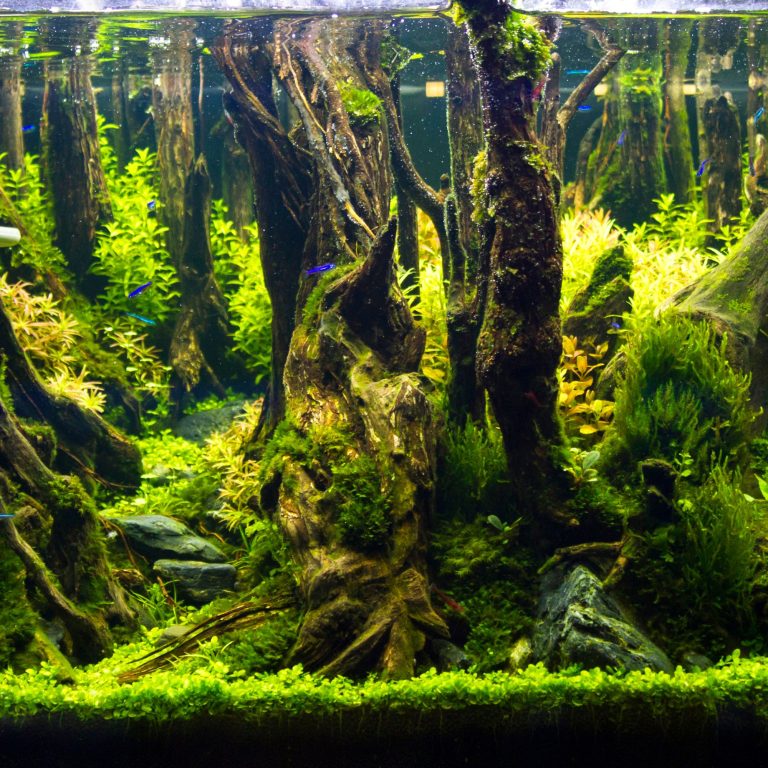Elevate Your Turtles Care: Unveiling the Best Reptile Heat Pad
Enhancing Your Turtle’s Care
When it comes to caring for your turtle, proper heating is an essential aspect that should not be overlooked. Turtles are ectothermic creatures, meaning they rely on external sources of heat to regulate their body temperature. Maintaining the ideal temperature range is crucial for their overall health and well-being. This is where reptile heat pads play a vital role in turtle care.
Importance of Proper Heating for Turtles
Turtles, like other reptiles, are highly dependent on their environment to regulate their body temperature. They require a specific temperature range to support their metabolic functions, digestion, and overall activity. Insufficient heat can lead to various health issues, including metabolic disorders, weakened immune systems, and poor growth.
Proper heating is particularly important for turtles because they spend a significant amount of time basking under a heat source to raise their body temperature. This behavior helps them digest their food effectively and absorb vital nutrients. Without adequate heat, turtles may become sluggish, lose their appetite, and become more susceptible to illnesses.
Role of Reptile Heat Pads in Turtle Care
Reptile heat pads, also known as reptile heat mats, are designed to provide a reliable and controlled heat source for your turtle’s habitat. These pads are placed beneath the tank or enclosure, emitting gentle heat that mimics the warmth of the sun. They help create a comfortable and consistent temperature gradient within the turtle’s living space, allowing them to regulate their body temperature effectively.
One of the primary benefits of reptile heat pads is their ability to provide localized heat. This allows turtles to move freely between warmer and cooler areas within their habitat, enabling them to thermoregulate according to their needs. Additionally, the warmth provided by heat pads promotes healthy digestion, supports immune function, and enhances overall activity levels.
When selecting a reptile heat pad for your turtle, it’s important to consider factors such as the size of the enclosure, the specific temperature requirements of your turtle species, and safety features of the heat pad. To learn more about the different types of reptile heat pads available and their features, check out our article on reptile heating pads.
Remember, it’s crucial to monitor the temperature within your turtle’s habitat using a reliable thermometer or thermostat. This ensures that the heat pad maintains the desired temperature range without any fluctuations. If you’re unsure about the appropriate temperature range for your turtle species, consult a veterinarian or refer to reputable sources for guidance.
By understanding the importance of proper heating and the role of reptile heat pads in turtle care, you can provide your turtle with a comfortable and conducive environment for their well-being. Make sure to conduct thorough research and consider the specific needs of your turtle species when selecting a reptile heat pad. Your turtle will thank you with their vibrant health and active demeanor.
Understanding Reptile Heat Pads
To provide optimal care for your turtle, it’s important to understand the basics of reptile heat pads. These heating devices play a crucial role in maintaining proper temperature levels in your turtle’s habitat, ensuring their health and well-being.
How Reptile Heat Pads Work
Reptile heat pads, also known as reptile heating pads or reptile heat mats, are designed to emit a controlled amount of heat to create a warm area within the enclosure. These pads consist of a heating element enclosed in a durable, insulating material.
When connected to a power source, the reptile heat pad generates heat, which is then transferred to the surface of the enclosure where it is placed. The heat pad warms the substrate, providing a comfortable basking spot for your turtle. This mimics the natural basking behavior of turtles in the wild, as they seek out warm areas to regulate their body temperature.
It’s important to note that reptile heat pads are not intended to heat the entire enclosure. They should be used in conjunction with other heating sources, such as reptile heat lamps or ceramic heat emitters, to create a thermal gradient within the enclosure. This allows your turtle to move between warmer and cooler areas as needed.
Different Types of Reptile Heat Pads
There are several types of reptile heat pads available on the market, each with its own unique features and benefits. Some common types of reptile heat pads include:
-
Under Tank Heat Pads: These heat pads are designed to be placed underneath the turtle’s enclosure. They provide heat from the bottom, simulating the warmth of the ground in their natural habitat. Under tank heat pads are commonly used for glass tanks or terrariums. For more information on reptile tank heating pads, check out our article on reptile tank heating pads.
-
Radiant Heat Panels: Radiant heat panels are mounted on the ceiling or sides of the enclosure. They emit infrared heat, which warms the objects and surfaces within the enclosure. Radiant heat panels are often used in larger enclosures or turtle rooms to provide widespread heating.
-
Heat Tape: Heat tape is a flexible heating element that can be attached to the sides or bottom of the enclosure. It provides a consistent source of heat along the tape’s length, ensuring even heat distribution. Heat tape is commonly used in reptile rack systems or custom-built enclosures.
When selecting a reptile heat pad, it’s important to consider factors such as the size of your turtle’s enclosure, the specific heating requirements of your turtle species, and any safety features that may be necessary. Additionally, using a reptile heat pad thermostat can help regulate and maintain the desired temperature. For more information on reptile heat pad thermostats, refer to our article on reptile heat pad thermostat.
Understanding how reptile heat pads work and the different types available will help you make an informed decision when choosing the best heating solution for your turtle’s habitat. Remember to always monitor the temperature in the enclosure and provide a suitable thermal gradient to ensure your turtle’s comfort and well-being.
Considerations for Turtle Care
When it comes to caring for your turtles, ensuring their environment is properly heated is essential. Reptile heat pads play a crucial role in maintaining the ideal temperature for your turtles’ well-being. Here are some important considerations to keep in mind when using reptile heat pads for turtle care.
Temperature Control and Regulation
Maintaining the correct temperature is vital for the health and comfort of your turtles. Different species of turtles have specific temperature requirements, so it’s important to research and understand the optimal temperature range for your particular turtle species. Reptile heat pads should be equipped with a thermostat to accurately control and regulate the temperature. This allows you to set the desired temperature and ensures that it remains constant, providing a comfortable habitat for your turtles. For more information on reptile heat pad thermostats, check out our article on reptile heat pad thermostat.
Size and Placement of Heat Pads
When considering heat pads for your turtles, it’s important to choose the appropriate size based on the size of your turtle’s enclosure. The heat pad should cover a sufficient area to provide even heat distribution throughout the habitat. Placing the heat pad under the tank or enclosure is a common method to ensure the warmth reaches the turtles. For more information on heat pads specifically designed for turtle tanks, refer to our article on reptile tank heating pads. Carefully follow the manufacturer’s instructions for proper placement and installation to avoid any potential hazards.
Safety Features to Look for
Safety should always be a top priority when selecting reptile heat pads for your turtles. Look for heat pads that offer safety features such as overheating protection and waterproof design. Overheating protection mechanisms help prevent the heat pad from reaching dangerously high temperatures, minimizing the risk of burns or fires. A waterproof design adds an extra layer of safety, guarding against any accidental spills or water exposure. Always read the product specifications and reviews to ensure the heat pad meets safety standards. Remember, the well-being of your turtles is dependent on a safe and controlled heating environment.
By considering these factors, you can ensure that your turtles have a comfortable and safe environment with the use of reptile heat pads. For more information on reptile heating pads and other related topics, visit our website’s reptile heating pads section. Remember to always prioritize the health and well-being of your turtles by providing them with the optimal heating conditions they require.
Exploring Reptile Heat Pads for Turtles
When it comes to providing the right heat for your turtles, reptile heat pads offer an effective and convenient solution. These heating pads are specifically designed to maintain the appropriate temperature levels in your turtle’s enclosure, promoting their overall well-being. Let’s take a closer look at three common types of reptile heat pads suitable for turtles: under tank heat pads, radiant heat panels, and heat tape.
Under Tank Heat Pads
Under tank heat pads, also known as reptile heat mats, are a popular choice for turtle owners. These pads are placed beneath the turtle’s enclosure, providing a gentle and consistent heat source. Under tank heat pads are designed to emit heat evenly, creating a warm basking spot for your turtles.
To ensure proper temperature regulation, it’s important to choose an under tank heat pad with an adjustable thermostat. This allows you to fine-tune the temperature according to the needs of your turtles. For more information on using a thermostat with reptile heat pads, check out our article on reptile heat pad thermostats.
Radiant Heat Panels
Radiant heat panels are another option to consider for turtle owners. These flat panels emit infrared heat, creating a warm and cozy environment for your turtles. Radiant heat panels are typically mounted on the ceiling or the side of the turtle’s enclosure, ensuring even distribution of heat throughout the space.
One advantage of radiant heat panels is their ability to mimic the natural heat from the sun. This helps create a more natural and comfortable living environment for your turtles. It’s essential to select a radiant heat panel suitable for the size of your turtle’s enclosure. For more information on appropriate sizing and placement, refer to our article on reptile enclosure heating pads.
Heat Tape
Heat tape, also known as reptile heat cable, is a flexible heating option that can be used to create customized heating zones within your turtle’s enclosure. This tape is typically placed underneath the tank or along the sides to provide localized heat. Heat tape allows for precise temperature control and can be easily adjusted to suit the needs of your turtles.
When using heat tape, it’s important to ensure proper installation and setup. Follow the manufacturer’s instructions carefully and consider using a thermostat to regulate the temperature. For more information on heat tape and its installation, check out our article on reptile heat tape.
By exploring the different types of reptile heat pads available, you can choose the one that best suits your turtle’s needs. Whether you opt for under tank heat pads, radiant heat panels, or heat tape, always prioritize the safety and comfort of your turtles. Monitor the temperature regularly and make adjustments as needed to create an ideal habitat for your shelled companions. For a comprehensive guide on the best reptile heating pads, refer to our article on best reptile heating pads.
Tips for Using Reptile Heat Pads
When it comes to using reptile heat pads to provide the necessary warmth for your turtles, there are a few key tips to keep in mind. Proper installation, careful temperature monitoring, and supplementing with other heating sources can ensure the well-being of your turtles.
Proper Installation and Setup
To maximize the effectiveness of your reptile heat pad, it’s crucial to ensure proper installation and setup. Follow these guidelines for a successful setup:
-
Clean the Tank: Before installing the heat pad, make sure the tank or enclosure is clean and free from any debris. This will ensure proper adhesion of the heat pad.
-
Placement: Position the heat pad on the outside of the tank or underneath the tank, depending on the type of heat pad you have. Follow the manufacturer’s instructions for specific placement recommendations.
-
Heat Pad Size: Choose an appropriately sized heat pad for your tank or enclosure. A heat pad that covers around one-third to one-half of the tank’s floor area is usually sufficient. Be sure to measure the dimensions of your tank before purchasing a heat pad.
-
Temperature Control: Connect the heat pad to a reliable and accurate temperature control device, such as a reptile heat pad thermostat. This will allow you to set and maintain the desired temperature for your turtles.
-
Secure Placement: Ensure that the heat pad is securely attached to the tank or enclosure. Some heat pads come with adhesive backing, while others may require additional methods of attachment. Follow the manufacturer’s instructions to secure the heat pad properly.
Monitoring and Adjusting Temperatures
Regular monitoring and adjustment of temperatures are essential to maintain a comfortable and safe environment for your turtles. Here are some tips for temperature management:
-
Thermometer: Place a thermometer in the tank to monitor the temperature accurately. It’s recommended to use a digital thermometer with a probe to measure the temperature at the basking spot and in other areas of the tank.
-
Ideal Temperature Range: Research the specific temperature requirements for your turtle species. Maintain the appropriate temperature range within the tank, including the basking area and the cooler side. Different turtle species have different temperature preferences, so it’s important to provide the right conditions.
-
Adjusting the Heat Pad: If the temperature is too low, you can slightly increase the heat pad setting. Conversely, if the temperature is too high, reduce the heat pad setting or adjust the thermostat accordingly. Regularly check the thermometer and make adjustments as needed.
-
Avoid Temperature Extremes: Be cautious not to subject your turtles to extreme temperatures. Sudden temperature fluctuations or excessively high temperatures can be harmful to their health. Always aim for a stable and consistent temperature within the recommended range.
Pairing Heat Pads with Other Heating Sources
In some cases, relying solely on heat pads may not provide sufficient heat for your turtles, especially if you have a larger tank or if the ambient temperature in your home is cooler. Consider using additional heating sources to supplement the heat pads:
-
Basking Lights: Install basking lights above the basking area to provide direct heat and UVB light. This will simulate the natural sunlight turtles require for thermoregulation and vitamin D synthesis.
-
Ceramic Heat Emitters: Ceramic heat emitters can be used in conjunction with heat pads to provide additional warmth. These devices emit infrared heat without producing light, making them ideal for maintaining nighttime temperatures.
-
Heat Rocks and Caves: Including heat rocks or caves within the tank can create localized warm spots for your turtles to bask and seek heat.
By following these tips for using reptile heat pads, you can ensure the optimal comfort and well-being of your turtles. Remember to always prioritize the safety and health of your pets, and consult with a reptile veterinarian or herpetologist if you have any specific concerns or questions.







